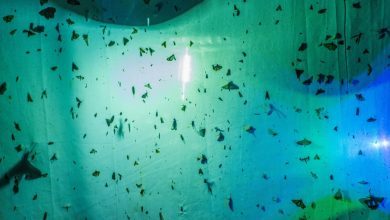Uncovering Mysteries of Female Dolphin Sexual Anatomy

Common bottlenose dolphins have sex frequently — very likely multiple times in a day. Copulation lasts only a few seconds, but social sex, which is used to maintain social bonds, can last much longer, happen more frequently and involve myriad heterosexual and homosexual pairings of dolphins and their body parts. Anything is possible, and, as new research suggests, probably pleasurable for swimmers of both sexes.
According to a paper published on Monday in the journal Current Biology, female bottlenose dolphins most likely experience pleasure through their clitorises.
The findings come as little surprise to scientists who research these dolphins. “The only thing that surprises me is how long it has taken us as scientists to look at the basic reproductive anatomy,” Sarah Mesnick, an ecologist at NOAA Fisheries who was not involved with the research, said, speaking of the clitoris. She added, “It took a team of brilliant women,” referring to two of the authors.
“A lot of people assume that humans are unique in having sex for pleasure,” Justa Heinen-Kay, a researcher at the University of Minnesota who was not involved with the paper, wrote in an email. “This research challenges that notion.”
And learning more about the anatomy of marine mammals’ genitalia has clear implications for their survival, Dr. Mesnick said: “The more we know about the social behavior of these animals, the better we’re able to understand their evolution and help use that to manage and conserve them.”
Historically, researchers have focused on male genitalia, driven by prejudice toward male subjects, prejudice against female choice in sexual selection and the fact that it can be easier to study something that sticks out. “Female genitalia were assumed to be simple and uninteresting,” Dr. Heinen-Kay said. “But the more that researchers study female genitalia, the more we’re learning that this isn’t the case at all.” She added that this shift may be driven in part by the increasing number of women researchers.
Patricia Brennan, an evolutionary biologist at Mount Holyoke College and an author on the paper, wound up studying the dolphin clitoris by way of the dolphin vagina. She and Dara Orbach, a biologist at Texas A&M University and another author on the paper, previously revealed how female dolphins have intricately pleated vaginas that can handily stopper a penis. The internal anatomy grants the female agency in choosing which male’s sperm may fertilize her egg.
When Dr. Brennan and Dr. Orbach began researching dolphin vaginas together in 2016, they found themselves dissecting as many of these pleated pouches as they could get their hands on. The researchers put out a request to local stranding networks and received lumps of frozen tissue over the years from stranded cetaceans in varying states of decay.
As the researchers thawed the samples in a sink, the warming flesh often began to reek. “I’m really glad I’m a vegetarian because I think I would never be able to eat meat again,” Dr. Brennan said.
Like cultured oysters, every dissected dolphin vagina unfurled to reveal a kind of treasure: an unmistakable clitoris, the size of an AA battery and the color of spam. “You open it up and then there’s this giant clitoris right there,” Dr. Brennan said.
The researchers dissected the clitorises of 11 common bottlenose dolphins and ran tissue samples through a micro CT scanner. Their examination revealed a number of signs of a functional clitoris, including erectile tissue that could become turgid with blood. They also found a band of connective tissue surrounding the erectile tissue, which ensures the clitoris could engorge and keep its shape. And the clitoris changed shape as the dolphins reached adulthood, suggesting it has a function related to sexual maturity.
The CT scanner showed the clitoral tissue contained unusually large nerves — up to half a millimeter in diameter — and abundant free nerve endings just under the skin, increasing sensitivity. And the clitoral skin itself was a third of the thickness of neighboring genital skin, making it much easier to stimulate.
These observations provide “some nice suggestive evidence” that female dolphins feel pleasure responses to tactile stimulation, said Brian Langerhans, an evolutionary biologist at North Carolina State University, who was not involved with the research. He added that more research was needed to prove the hypothesis.
But it is no easy feat to study dolphin sex experimentally in a lab, or in the wild. The physiological signs of pleasure associated with humans and other primates — vocalizing, grimacing, rolling eyes and panting — may look totally different in a dolphin. “Their bodies are so different from us, and their faces are so different from ours,” Dr. Brennan said. “How would we know?”
Dr. Langerhans and Dr. Mesnick both suggested the need for comparative research between other species of cetaceans. “Are they going to find the same kind of anatomy in species that are more solitary or open-ocean or deep-diving?” Dr. Mesnick wondered. For example, a pleasurable clitoris might be far less useful in a species where males and females interact less often.
Dr. Brennan hopes to study clitorises from across the animal kingdom — she already has an orca clitoris sitting in a jar in her lab. The white whale of marine clitorises may be the blue whale’s. “They’ve got the biggest everything,” Dr. Brennan said. “I would bet you a million dollars that they have a clitoris, and it’s probably huge.”




